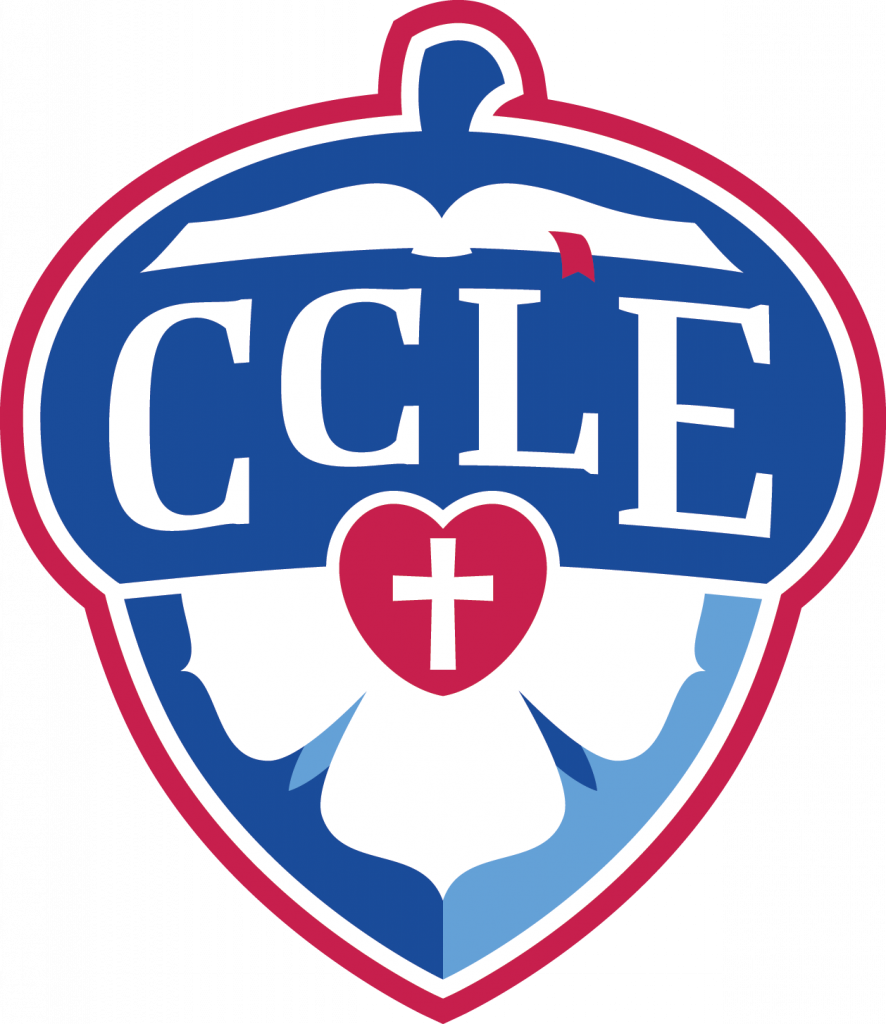Our Logo and Seal
The Shield: The lower half of the logo incorporates a shield. The shield is a defensive device used in battle since ancient times. Since medieval times, the shield has been a method for displaying a soldier’s identifying mark (called a coat of arms) in battle. The shield reminds us that we are the Church militant, and that while we are yet on earth we are not at peace. The devil, the world, and our flesh make war on us day and night, and therefore we are instructed to “take up the shield of faith” (Eph. 6:16).
The Luther Seal: Emblazoned on the shield is the rose used by Luther to represent the evangelical church. At its center is a heart containing a cross, to show that we are saved alone by faith in Christ crucified. This faith creates peace, joy, and life, which are represented by the white rose. The rose rests on a blue field, foreshadowing our future joy in heaven. The Luther rose is incorporated into many coats of arms, especially in Germany and Austria.
The Acorn: The outer shape of the logo takes the form of an acorn. The oak tree is a specimen known not for its beauty, but for its strength and longevity. The Lutheran church is 500 years old, and the Christian Church goes back 2,000 years. The classical model of education is centuries older even than that. The CCLE is not concerned with the latest educational fads. Rather, the consortium stands on centuries of spiritual wisdom and educational experience.
The acorn represents our youths. They are descendants of an age-old oak, endowed with a rich heritage, and entrusted into our care. If they are planted in good soil, and fed and watered with the Word of God so that it yields understanding, we have Christ’s promise that they will grow and yield “thirty, sixty, or one hundred times what was planted” (Mt. 13:23).
The Word: At the top of the logo is a depiction of a Bible, which is the Word of God. The Bible is lying open because it is meant to be read and learned. Although much can be said about the value and effectiveness of a classical education, such an education would have no lasting value if the Word of God was not the most important text being studied, and if the cross of Christ was not at the center. As we learn from St. Paul, “All Scripture is given by inspiration of God, and is profitable for doctrine, for reproof, for correction, for instruction in righteousness, that the man of God may be complete, thoroughly equipped for every good work” (2 Tim. 3:16-17). A classical education finds its completion in Christ and his Word.
Red stands for the blood of Christ, which surrounds and covers us because of his all-sufficient death on the cross.
White represents holiness, truth, and purity, which the Holy Spirit imparts to us through baptism.
Blue signifies steadfast faithfulness to the Word of God and to the apostolic Church.
The Seal: The seal bears many of the same elements as the logo, but with some differences. Instead of a single acorn, the seal bears a wreath of oak branches, bearing acorns. The shield and Luther’s seal are dominant, and the Latin word “VIVIT” (meaning, “He lives”) is inscribed in the leaves of the rose. Above the banner that contains the consortium’s initials, a torch proclaims Christ as the light of the world and the source of all truth and knowledge.


